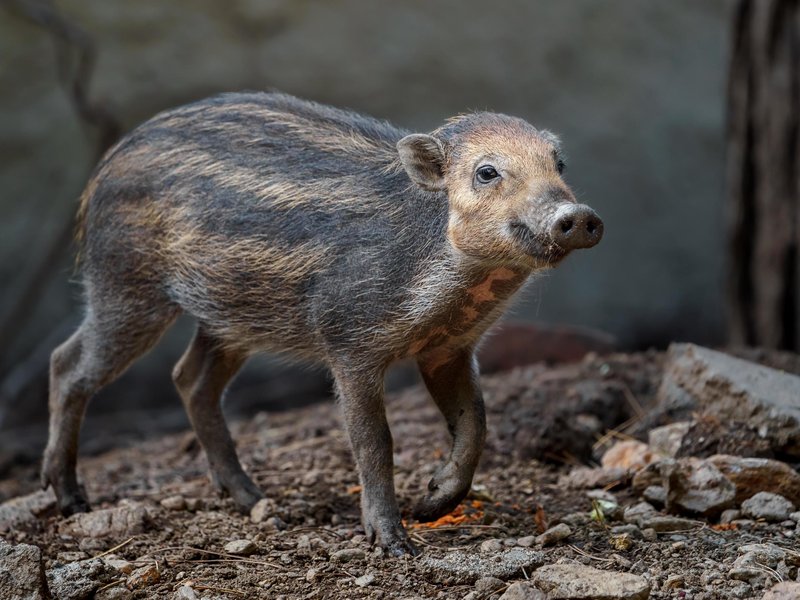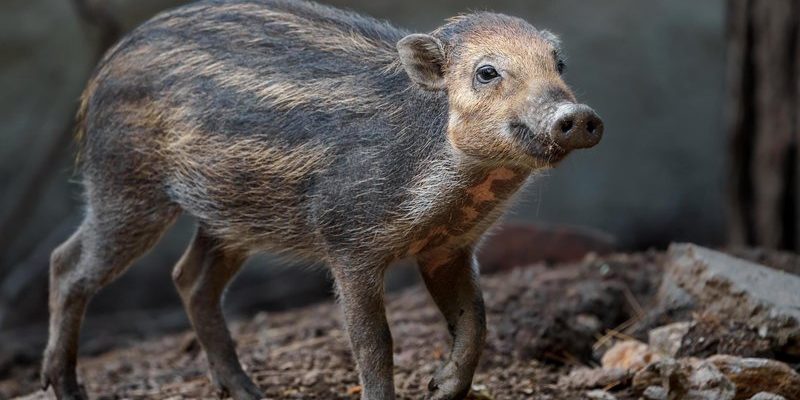
If you’ve ever stumbled upon one of these pigs in a zoo or read about them online, you might have wondered why they look so different from your average farm pig. After all, pigs are usually associated with muddy farms and cozy barns, not with the lush forests of Southeast Asia where the Visayan warty pig calls home. So, let’s dig into what makes this species so special, and clear up some of those common misunderstandings along the way.
The Warts: A Sign of Aggression or Just Unique Features?
One of the biggest misconceptions about the Visayan warty pig is that those prominent warts signify aggression or hostility. Here’s the thing: while these warts may look intimidating, they actually serve a different purpose. The warts are primarily composed of thickened skin and are more about physical adaptation than a personality trait.
Think of the warts as built-in armor. They help protect male pigs during fights, especially when competing for mates or territory. Given the competitive nature of mating rituals in the wild, those warts give a layer of protection against the sharp tusks of rival males. So no, you don’t need to worry about bumping into one and getting charged at because of those warts!
The Role of Hair in Their Lifestyle
Another interesting point is the spiky hair that tops their heads and runs down their backs. This fur helps keep them cool in their tropical habitat and is an adaptation to their environment. It’s not just for show! The hair can also act as camouflage among thick vegetation, allowing them to blend in with their surroundings.
In contrast to domestic pigs, the Visayan warty pig’s hair is coarse and often stands on end, which adds to their unique appearance. Don’t be fooled by the wild look; these traits are part of their survival kit, not indicators of a rough personality.
Are They Really Endangered?
You might be wondering about the status of the Visayan warty pig. Are they truly endangered, or is that just another myth? The answer is a resounding yes—these pigs are classified as critically endangered. This isn’t just a casual label. Habitat loss due to deforestation and hunting have dramatically reduced their numbers over the years.
Conservation efforts are underway to help protect the remaining populations, but the challenges are significant. When you hear about a species being endangered, it often feels abstract, right? But in the case of the Visayan warty pig, it means that if we don’t act now, we might lose these unique creatures forever.
The Impact of Habitat Loss
The forests of the Visayan Islands in the Philippines are shrinking rapidly. Local agriculture, logging, and urban development have all taken a toll. It’s like a game of musical chairs: as habitats decrease, the pigs are left with fewer places to live. Losing their natural environment isn’t just detrimental—it also affects their ability to thrive and reproduce.
This reality is tough to swallow. Seeing these pigs in the wild one day could become a rarity if proactive steps aren’t taken. So, if you ever get a chance to support conservation efforts, it’s definitely a cause worth considering.
Myth: They Are Just Like Domestic Pigs
Another common misconception is that the Visayan warty pig behaves just like domestic pigs. That’s a bit of a stretch! While they share a family tree, their behaviors and needs are quite different.
Wild pigs are more solitary compared to their domestic counterparts, which thrive in groups. The Visayan warty pig is a more rugged individualist, usually roaming alone or in small family groups. They also have a more complex diet, foraging for roots, fruits, and smaller animals, which is quite different from the grain-heavy diet that farm pigs might munch on.
Let’s face it, they thrive on adventure! Their foraging habits keep them active and engaged, and their wild nature means they have different social behaviors and instincts.
Their Communication Style
In the wild, communication is essential for survival. You won’t hear these pigs grunt and squeal like farm pigs—they have a range of vocalizations and body language that help them navigate their environment. *Honestly, watching them communicate is fascinating*. Their interactions tell a richer story about their lives than simply being “pigs.”
If you ever have the chance to observe them in their natural setting, you’ll see how they use body language and sounds to warn each other about potential threats. It’s like a whole secret language that most people don’t even realize exists!
Dietary Myths: What Do They Really Eat?
You’ve probably heard that pigs will eat just about anything. While that might be true for domestic pigs, the Visayan warty pig has a much more specialized diet. This misconception arises because people generally view all pigs through a single lens.
In their natural habitat, Visayan warty pigs are opportunistic foragers. They prefer a variety of items, including fruits, tubers, and even small animals. This diet allows them to adapt to their environment and maintain their health. Think of them as the ultimate food critics; they know exactly what they need to survive.
In captivity, their diet must mimic their wild habits to keep them healthy. They’re offered a mix of fruits, vegetables, and specialized pellets designed to meet their nutritional needs. If you’ve ever seen one snuffling through its meal, it’s a reminder of how nature designed its diet to fit its lifestyle perfectly.
Feeding and Care in Captivity
If you happen to visit a zoo or sanctuary housing these pigs, you might notice zookeepers closely monitoring their diet. Proper care includes providing ample space and a stimulating environment. Without these, they can become stressed or exhibit undesirable behaviors. Caring for a Visayan warty pig isn’t just about feeding them; it’s a holistic approach to their welfare.
Ultimately, the proper diet and care are crucial for maintaining their well-being—both in captivity and in the wild.
As we wrap up our dive into the world of the Visayan warty pig, it’s clear these animals are so much more than their warty appearances. They are unique creatures that deserve our admiration and respect, as well as our action for their conservation. The next time you hear someone spouting off myths or misconceptions, take a moment to share what you’ve learned today.
Let’s move forward with a greater understanding of these fascinating animals and support efforts to protect them. After all, every species has its part to play in the rich tapestry of our planet. So, whether you consider them quirky pigs or valuable ecological players, remember: knowledge is power, and in this case, it just might help save a species.

